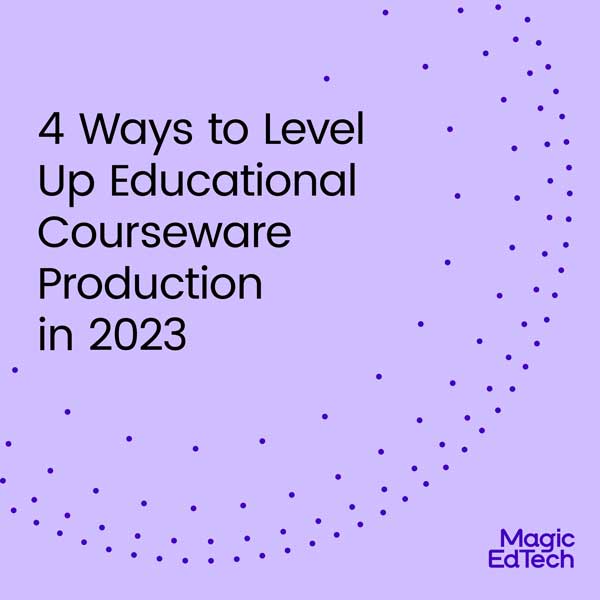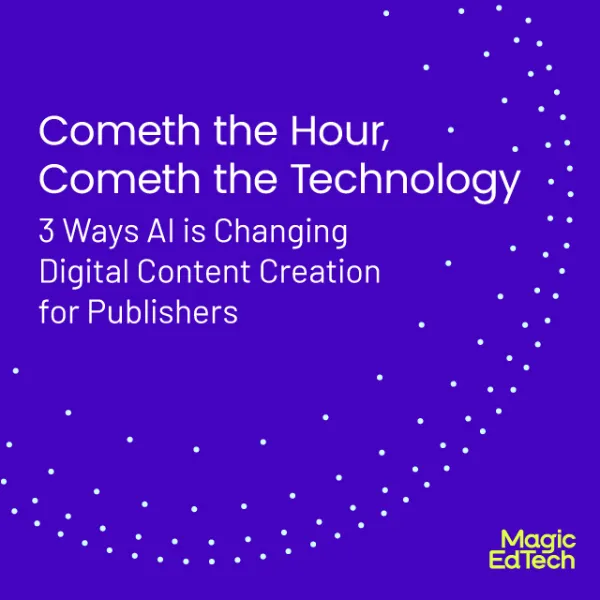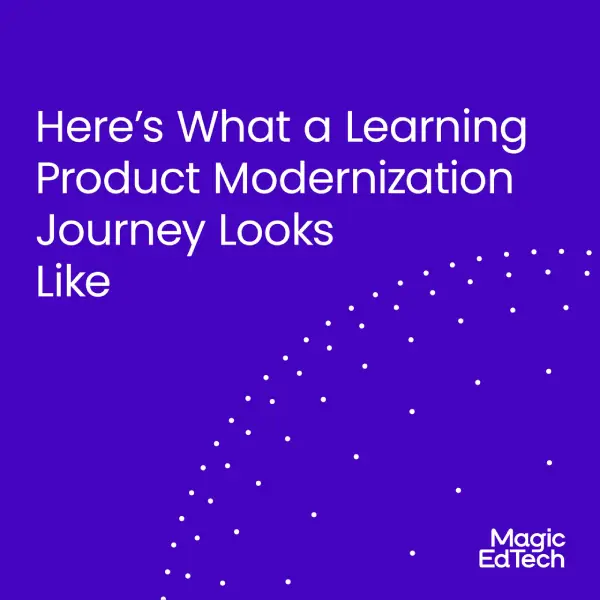Making Digital Learning Stick: 5 Secrets for Educational Publishers
- 28 July, 2023
- Reading Time: 4 mins
How are educational publishers navigating the transformative shift toward digital learning? This change in the education realm presents both challenges and excitement for those involved. The potential to promote inclusive education through innovative technologies and diverse learning experiences is vast, but it also requires careful navigation to ensure successful implementation.
One example of an educational publisher embracing digital learning is Ascend Learning. We recently had the privilege of chatting with Christine Emerton, VP of Content Strategy and Implementation at Ascend Learning, in our latest Tech in EdTech podcast episode. With over two decades of experience in transitioning from print to digital education, Christine shared valuable insights and lessons learned along the way.
Drawing from Christine’s expertise and Ascend’s journey, this blog delves into the challenges faced by educational publishers in their journey to digital learning and explores strategies for overcoming them, ultimately fostering diversity, equity, and inclusion (DEI) principles in a more inclusive educational landscape.

How to Bridge the Gap Between Virtual and Real-world Learning
As educational providers to professions that require hands-on training, the first challenge is to bridge the gap between virtual learning and real-world experiences. Since the pandemic, the demand for practical remote learning solutions has intensified. Virtual simulations and interactive software can be some ways to overcome this challenge. By investing in immersive learning tools, learners can immerse themselves in lifelike scenarios that foster critical thinking and skill development, irrespective of their physical location. Additionally, integrating remote proctoring for high-stakes assessments ensures academic integrity without compromising safety or convenience.
Developing Learner-Centered Education
Today’s learners are dynamic, seeking flexible and convenient educational options to suit their busy lives. They crave on-the-go learning experiences that empower them to grow at their own pace. To meet this challenge, learning must go beyond just converting print to digital. Publishers should approach it differently, actually digging into how to make courses engaging and modular. Presenting content in bite-sized modules and optimizing it for mobile devices allows learners to access information seamlessly, maximizing their learning potential in the digital age. Furthermore, incorporating interactive elements, such as multimedia and adaptive learning tools, fosters active participation and enhances comprehension.
Transitioning Seamlessly and Managing Publishing Workflows
The transition from print-centric to multi-format digital content development poses organizational challenges. As the volume of digital content grows, there is a definite need to find effective strategies to manage and organize it efficiently. Rethinking content development strategies offers a viable solution. Decoupling content creation from specific formats enables flexibility and adaptability across various platforms. Collaborating with edtech experts and digital content transformation specialists can equip publishers with cutting-edge tools and methodologies for a smooth and successful transition.

Cultivating Diversity, Equity, and Inclusion (DEI) in Educational Content
As publishers bear the responsibility of nurturing an inclusive learning environment that respects and represents the diverse backgrounds and perspectives of students. To achieve this, collaboration with DEI experts and conducting content audits to check if the content is inclusive is a must. Partnering with external DEI experts will provide valuable insights and training, enabling the integration of inclusive practices into content development. Regular content audits are essential to identify and rectify potential biases, ensuring that the materials resonate with learners from all walks of life.
Empowering Educators and Embracing Change
Amidst the digital transformation, supporting educators and internal teams through change management is vital to our success. To accomplish this, we must provide comprehensive training and ongoing support. Equipping teams with extensive training in modern content development methodologies and digital tools fosters confidence and a forward-thinking mindset. Simultaneously, offering continuous support to educators through workshops, seminars, and easily accessible resources enables them to navigate the digital landscape effectively and implement DEI-informed practices in their classrooms.
In conclusion, as publishers make the move toward digital education, embracing the principles of diversity, equity, and inclusion becomes paramount. By adopting innovative solutions like virtual simulations and learner-centered resources, they can bridge the gap between virtual and real-world learning, ensuring that every student thrives. Adapting to the digital era with open arms and investing in advanced technology, along with creating engaging modular content, and prioritizing inclusivity will pave the way toward a brighter and more accessible future for all learners.
For more in-depth discussions on this topic, don’t miss the conversation with Christine Emerton on Tech In EdTech: https://www.magicedtech.com/podcast/from-ink-to-pixels-discover-the-intricacies-of-transitioning-to-digital-publishing/




